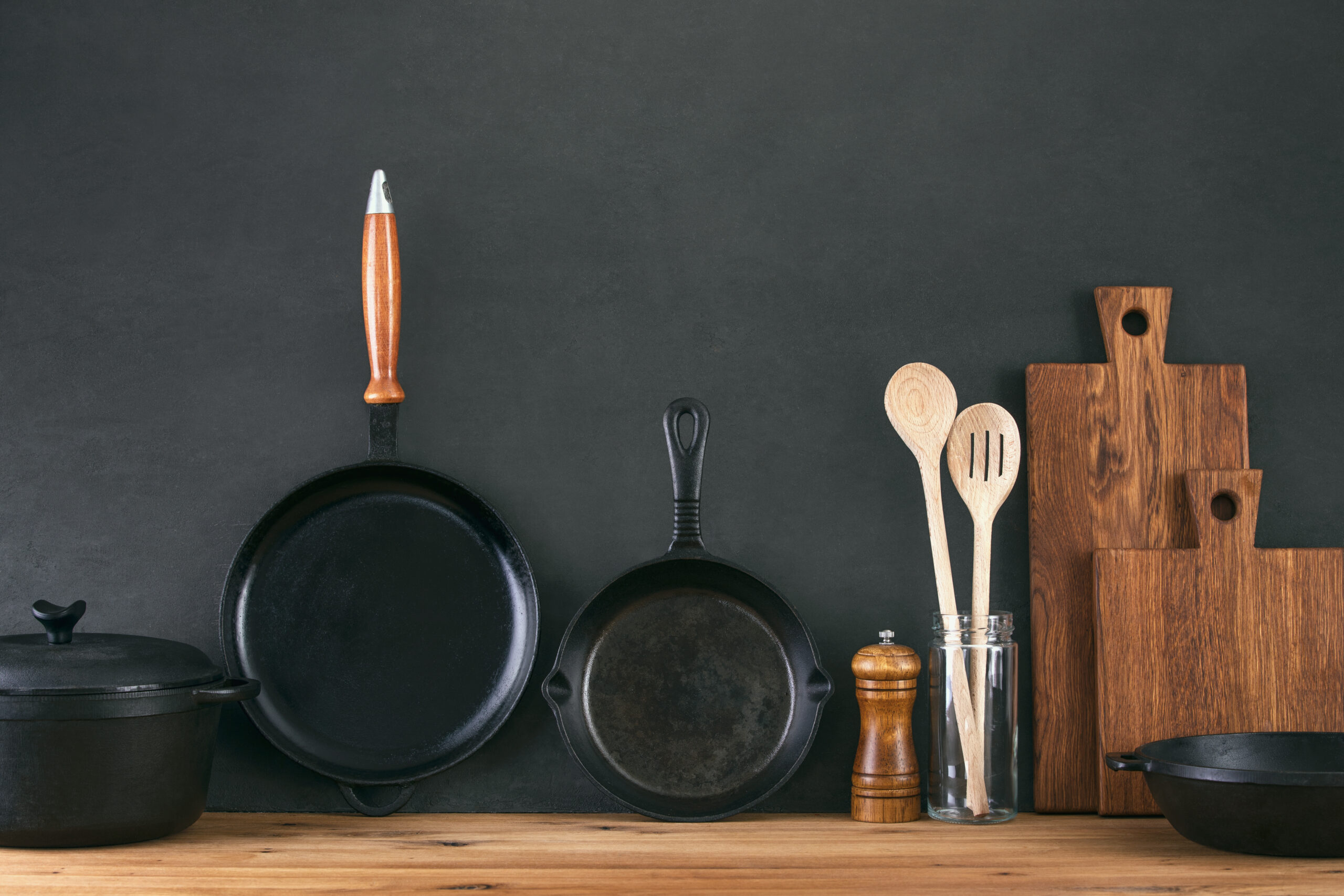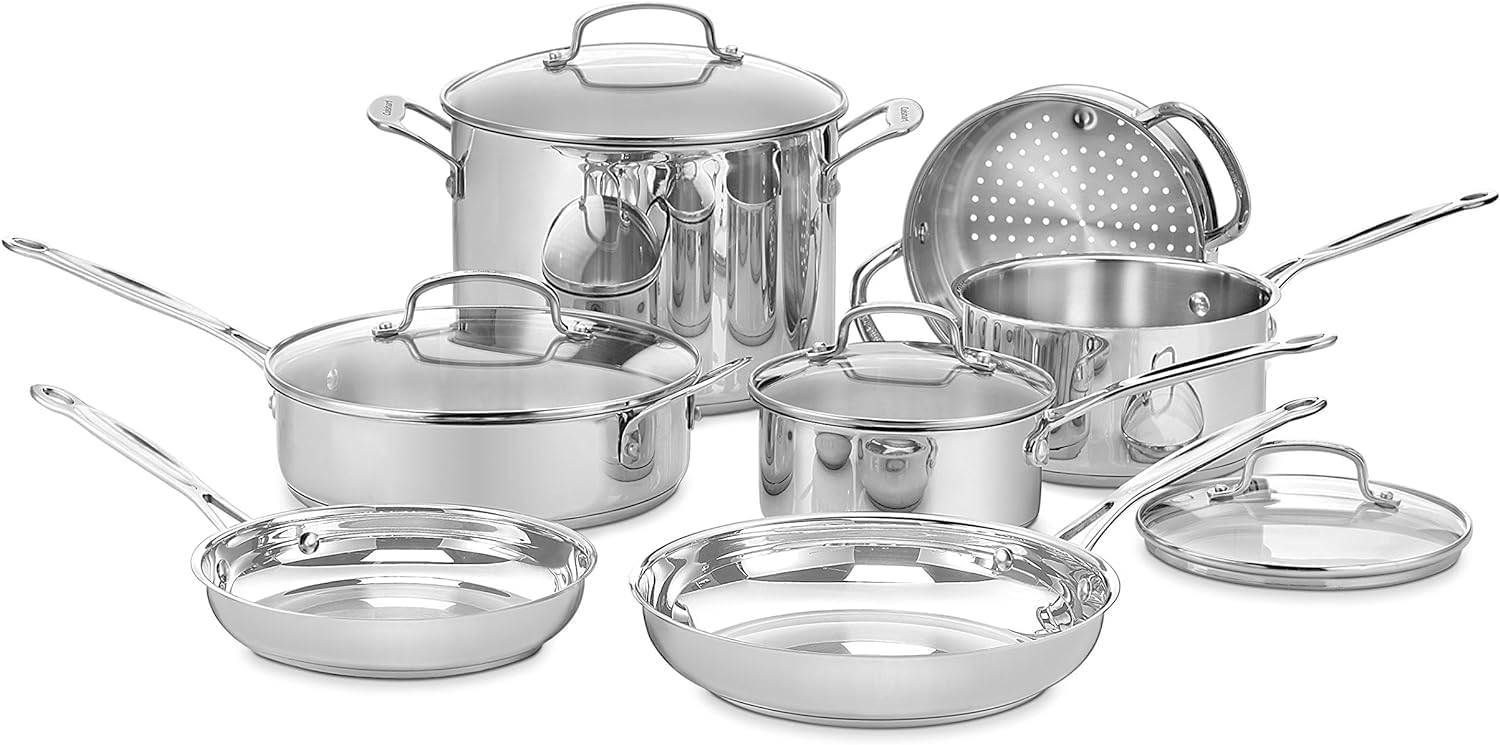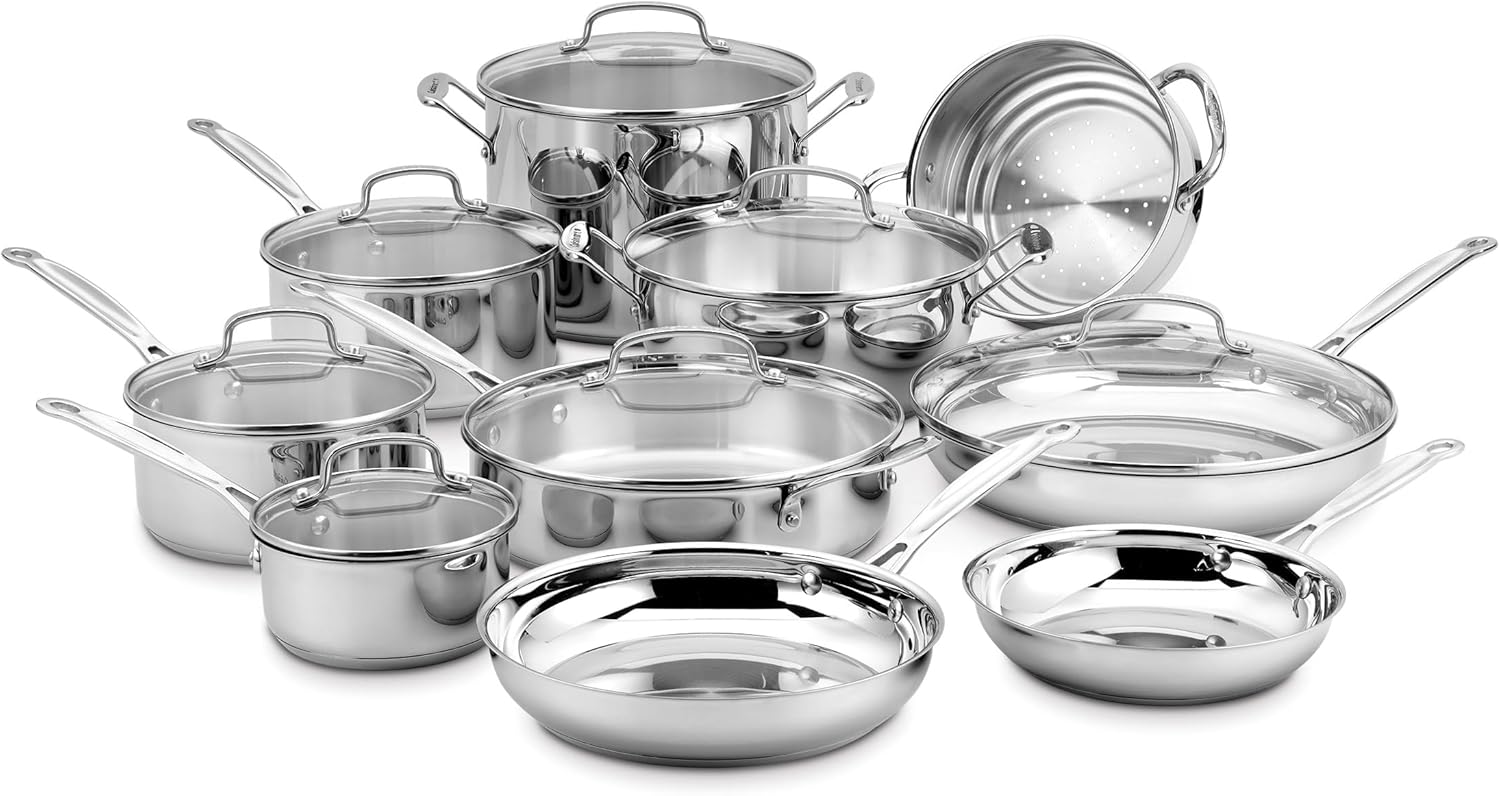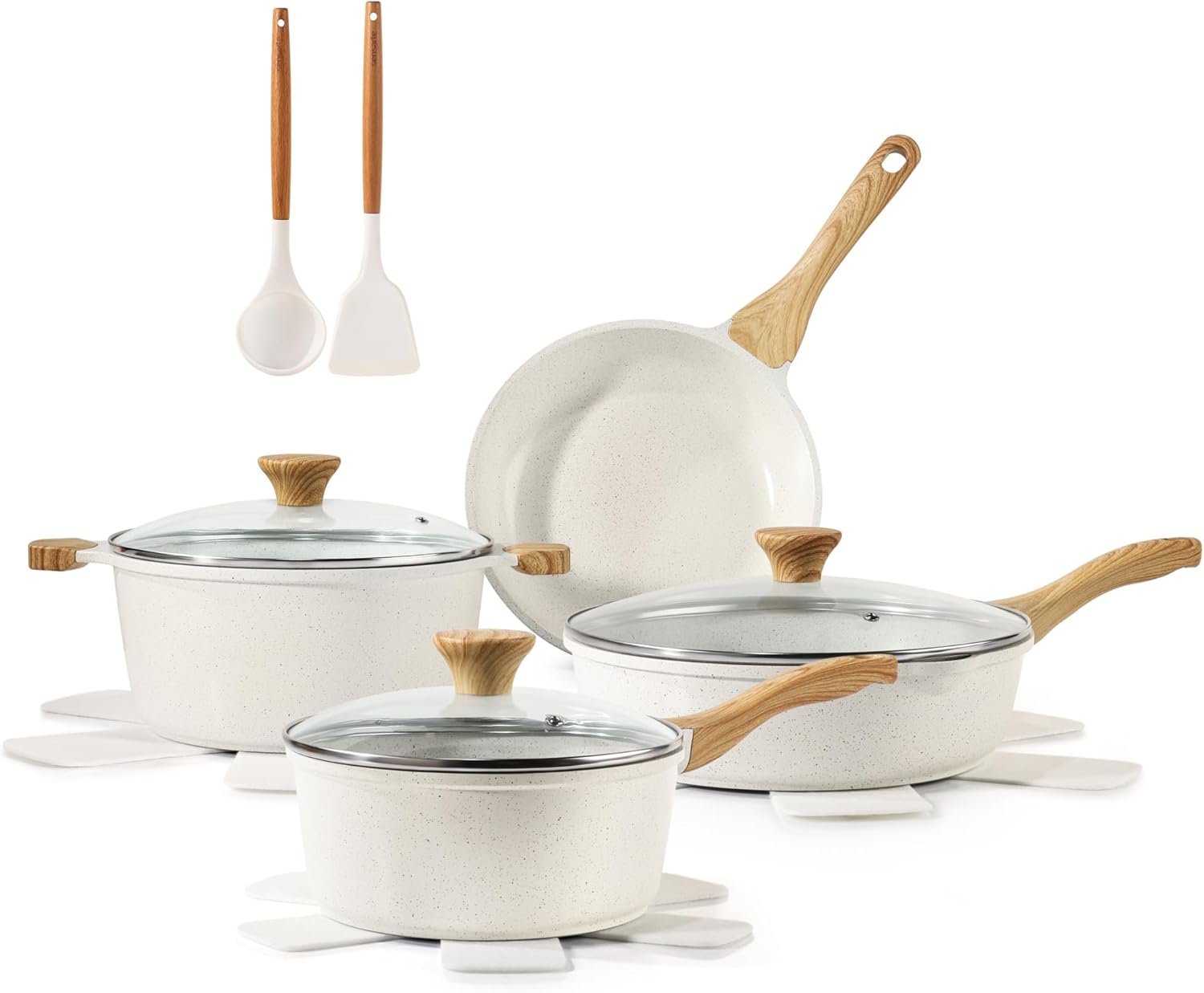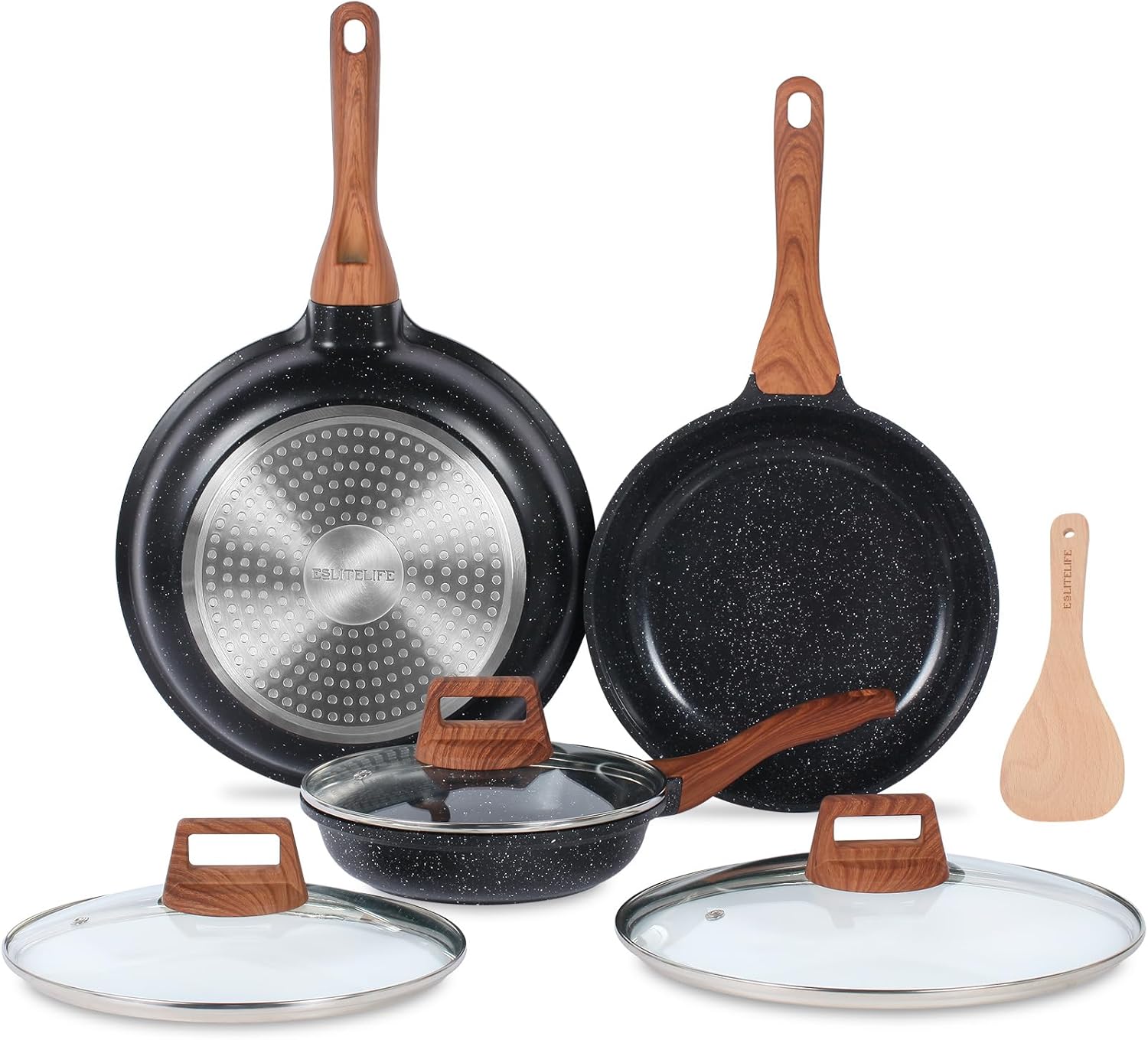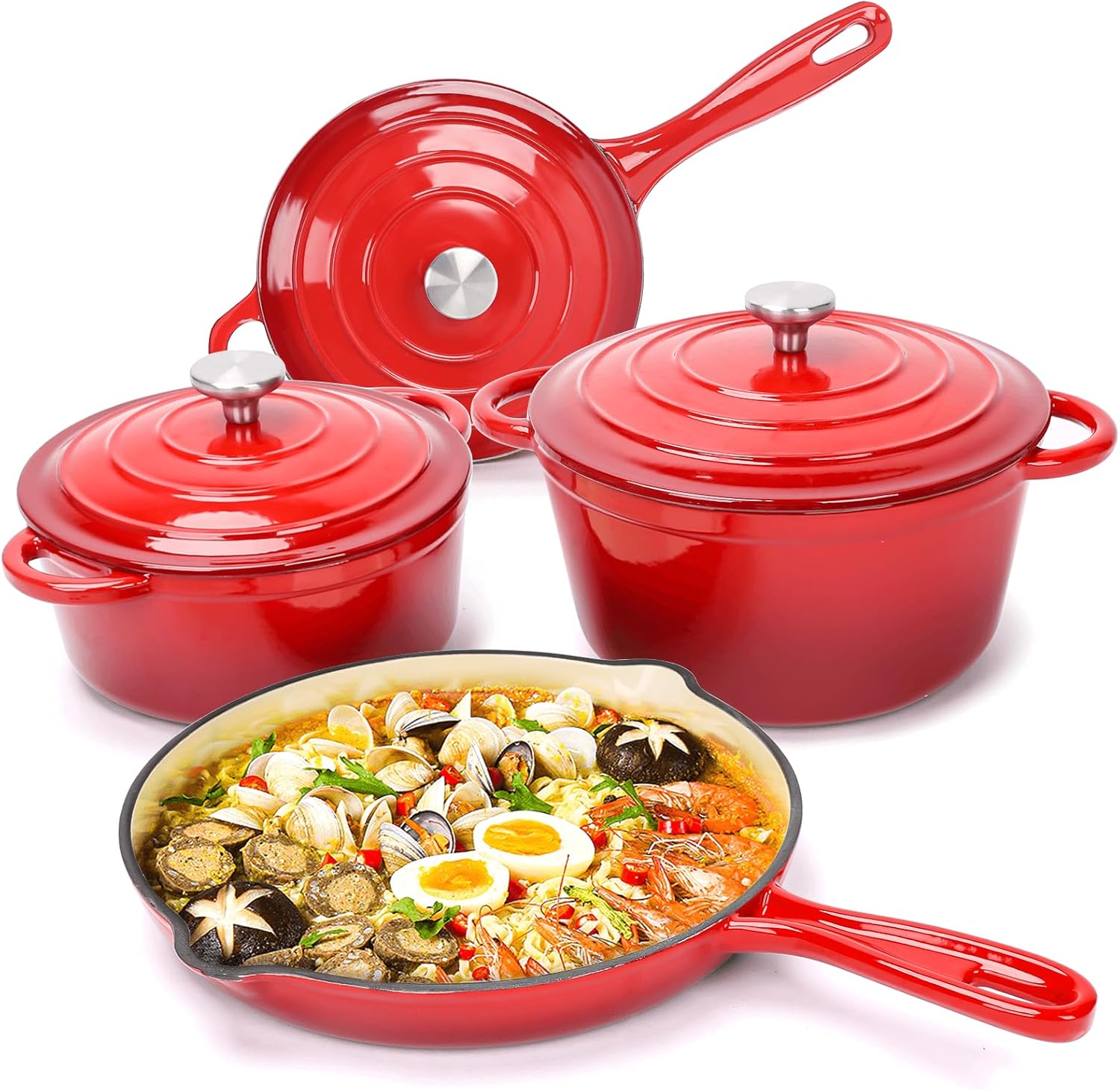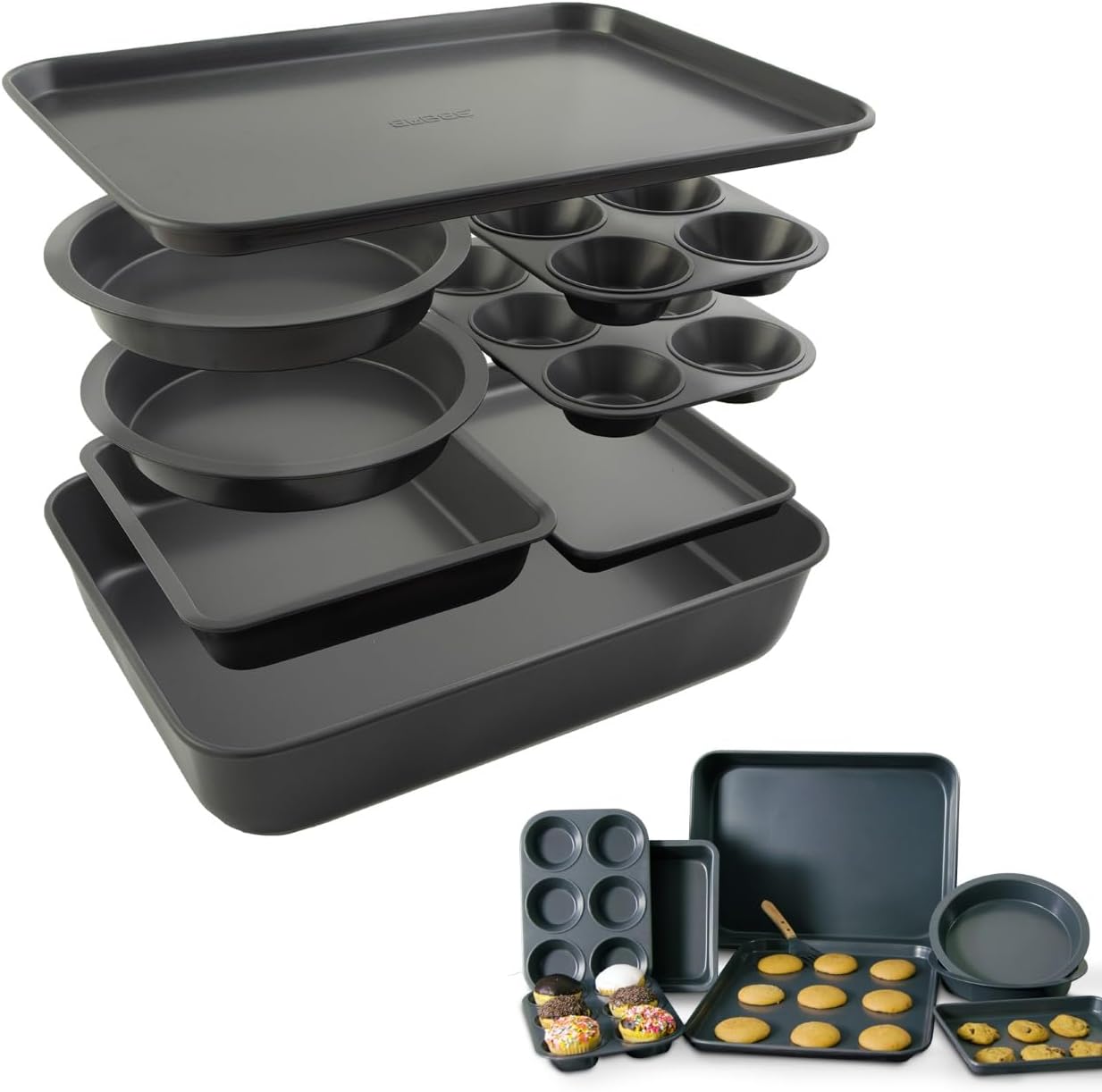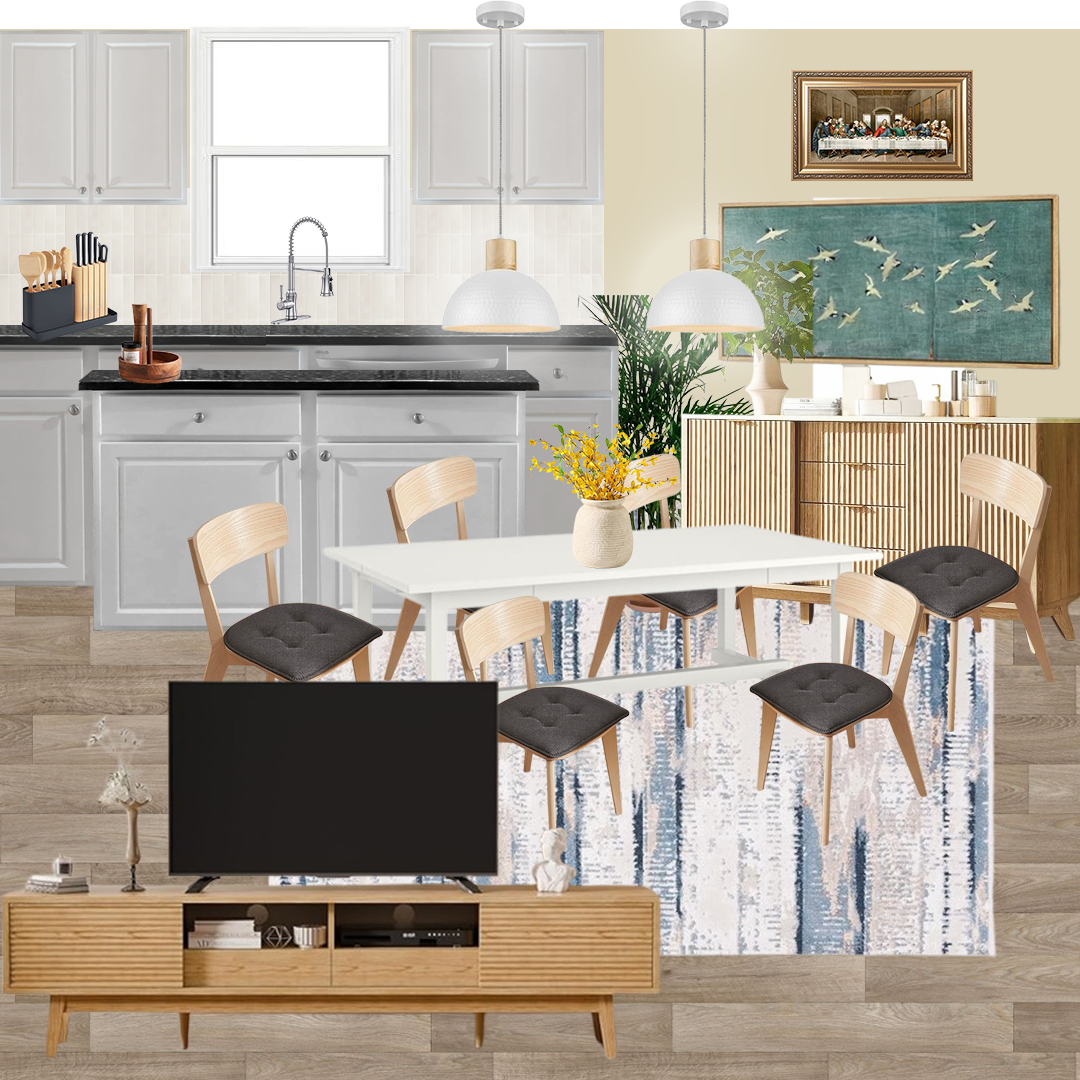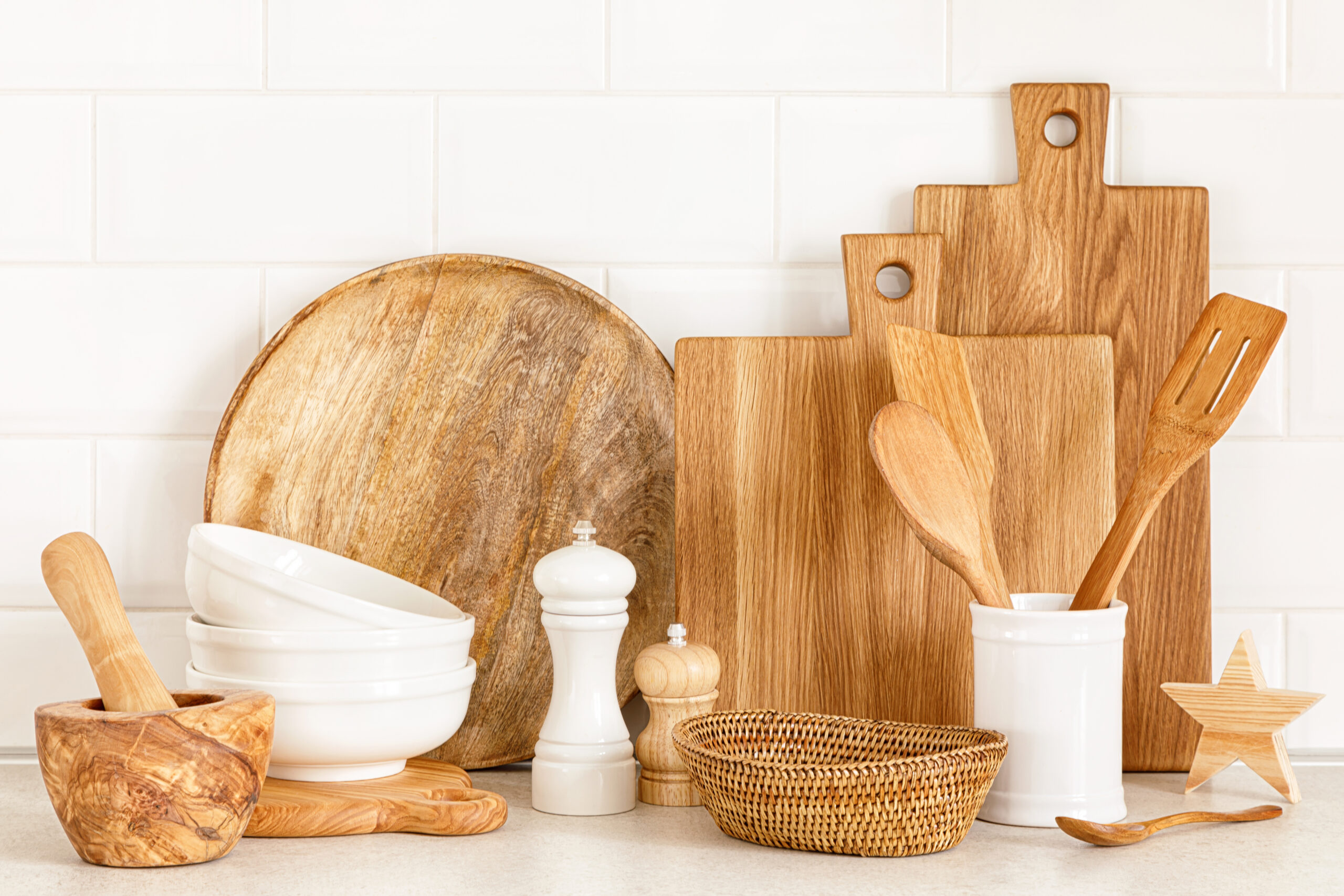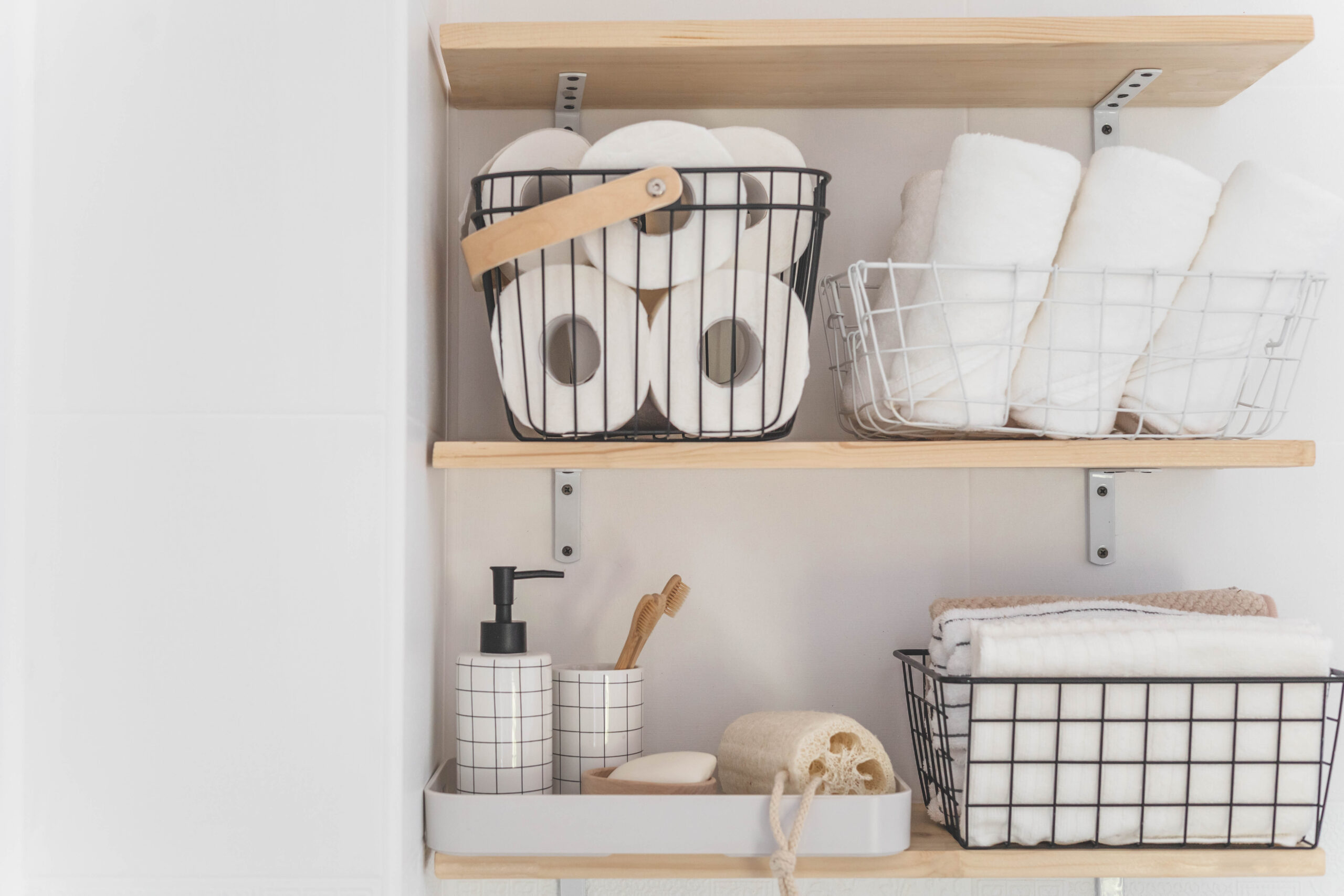If you’re trying to make healthier choices in your kitchen, the cookware you use should be just as important as the ingredients you cook with. Chemical-free cookware is a smart choice for both your health and the environment. In fact, many of us are looking to avoid harmful chemicals like PFAS (per- and polyfluoroalkyl substances) that are often found in traditional non-stick pans. Choosing durable, scratch-resistant cookware is key to ensuring that you’re creating meals in a space that’s as healthy as it is stylish.
In this post, I’m sharing the best non-toxic cookware options, materials that offer great functionality, and tips for keeping them in top shape. Plus, I’ll talk about how to spot PFAS-free pans, so you can make an informed decision when upgrading your cookware.
1. Stainless Steel: The Durable, Scratch-Resistant Choice
When we talk about chemical-free cookware, stainless steel is often at the top of the list. It’s durable, scratch-resistant, and non-reactive, which means it won’t leach harmful chemicals into your food. Stainless steel also heats up evenly and retains heat well, making it perfect for everything from sautéing to simmering.
For maintenance, just use warm soapy water and a soft cloth. If you want to remove tough stains, a paste of baking soda can do wonders. Stainless steel doesn’t require much effort to keep in great condition, and when cared for properly, it can last a lifetime.
Best Utensils: Stick to wooden utensils to avoid damaging the surface.
2. Cast Iron: Timeless and Reliable
Cast iron cookware has been a kitchen staple for generations, and for good reason. It’s incredibly durable and retains heat like no other material, which makes it great for searing, frying, and slow-cooking. When seasoned well, cast iron naturally becomes non-stick, and its non-toxic nature makes it an excellent choice for a healthier kitchen.
However, cast iron does require a bit of maintenance. After each use, clean with hot water and a brush (skip the soap). After drying it, apply a thin layer of oil to prevent rust. Don’t worry if it gets a little grimy; the seasoning gets better with age!
Best Utensils: Use wooden utensils to avoid damaging the seasoning layer. Metal can scratch the surface, leading to rust.
3. Ceramic Cookware: Non-Toxic and Non-Stick
If you’re seeking something more contemporary and non-stick, ceramic cookware could be your best bet. Free from harmful chemicals like PTFE and PFOA (found in traditional non-stick cookware), ceramic pots and pans are naturally non-stick and easy to clean.
For care, avoid high heat as it can damage the ceramic coating. Gently wash with a soft sponge and mild detergent. Keep in mind, while ceramic is great for low-fat cooking, it’s not as scratch-resistant as other materials like stainless steel or cast iron. So, treat it gently.
Best Utensils: Wooden utensils work best here to keep your pans in top shape.
4. Carbon Steel: Lighter than Cast Iron, Just as Durable
For those who love cast iron but want something a bit lighter, carbon steel is a great choice, perfect for baking pans. It’s very similar to cast iron in terms of durability and heat retention but weighs less, making it easier to handle. As with cast iron, carbon steel becomes naturally non-stick over time with proper seasoning.
Maintain carbon steel the same way you would cast iron: clean with hot water, dry thoroughly, and reapply oil after each use to maintain its seasoning and prevent rust.
Best Utensils: Again, wooden utensils are the way to go here to avoid scratching or damaging the surface.
5. Non-Toxic Non-Stick Cookware: Safe Alternatives
If you love non-stick cookware but want to avoid PFAS (the harmful chemicals found in some non-stick coatings), there are now plenty of PFAS-free alternatives available. Ceramic-coated pans, like those from GreenPan, offer the non-stick functionality we crave without the harmful chemicals. These pans are great for cooking delicate foods like eggs or fish.
While ceramic-coated non-stick pans are relatively low-maintenance, it’s important not to overheat them. Stick to medium heat, and avoid using metal utensils that can scratch the surface.
Best Utensils: Stick to wooden, utensils to preserve the surface.
6. How to Identify a PFAS-Free Pan
Looking for a PFAS-free pan is easier than ever. Here’s how you can spot one:
- Check the Label: Many brands will clearly label their pans as PFAS-free or PFOA-free. Always check the product description or packaging for these terms.
- Look for Ceramic Coatings: Brands like GreenPan and Made In offer ceramic-coated non-stick cookware that’s free from PFAS and other toxic substances.
- Verify the Brand’s Standards: Trusted brands like Lodge and Le Creuset often detail their commitment to non-toxic materials on their websites. Ensure you’re buying cookware from a brand that clearly states their product is free from harmful chemicals.
7. Maintaining Your Non-Toxic Cookware for Longevity
To get the most out of your chemical-free cookware, regular maintenance is essential:
- Stainless Steel: To keep it looking pristine, avoid abrasive cleaning pads. Clean with warm soapy water, and for stubborn stains, a baking soda paste will work wonders.
- Cast Iron: Season your cookware regularly to maintain its non-stick surface. Clean with hot water and a brush (no soap), dry thoroughly, and apply a thin layer of oil after each use.
- Ceramic: Avoid high heat, as it can damage the ceramic coating. Clean with a soft sponge and mild detergent. Be careful not to scratch the surface with metal utensils.
Conclusion: Safe, Stylish, and Durable Cookware for Your Health-Conscious Kitchen
When it comes to chemical-free cookware, it’s important to find options that blend health, durability, and style. Materials like stainless steel, cast iron, ceramic, and carbon steel provide non-toxic, durable alternatives to traditional cookware. Whether you prefer the rustic charm of cast iron or the sleek, modern design of ceramic cookware, there’s a safe, non-toxic cookware option for every kitchen.
Investing in quality cookware doesn’t just improve the aesthetic of your kitchen—it also promotes a healthier, more sustainable lifestyle. With proper care, your cookware can last for years, making it an investment in both your health and your home.

